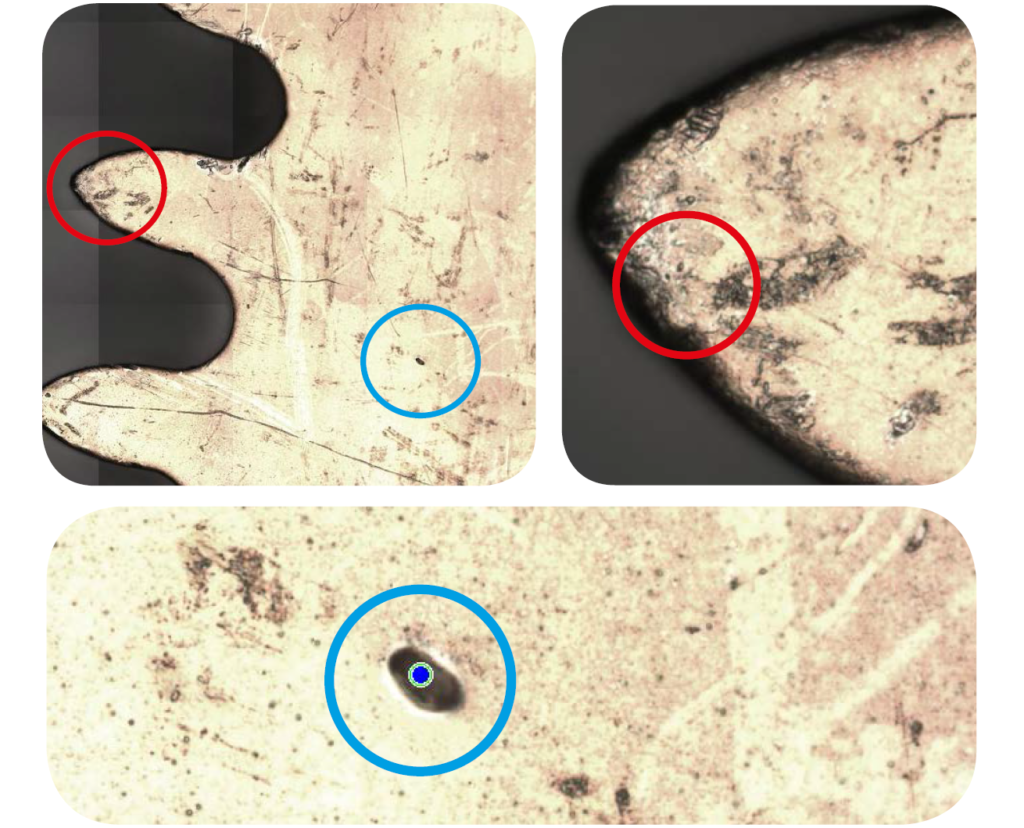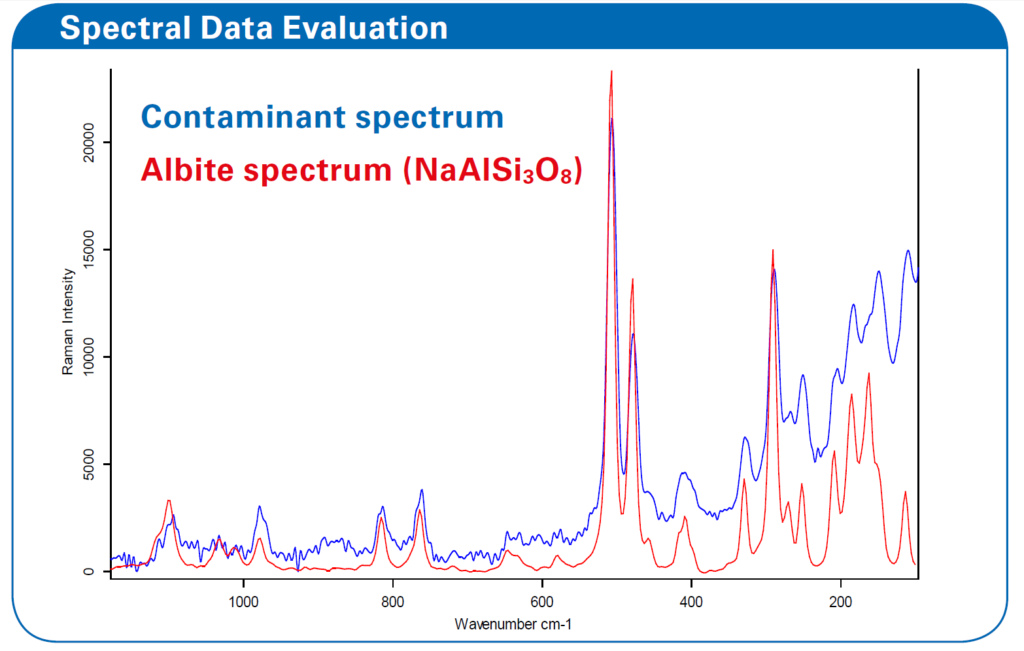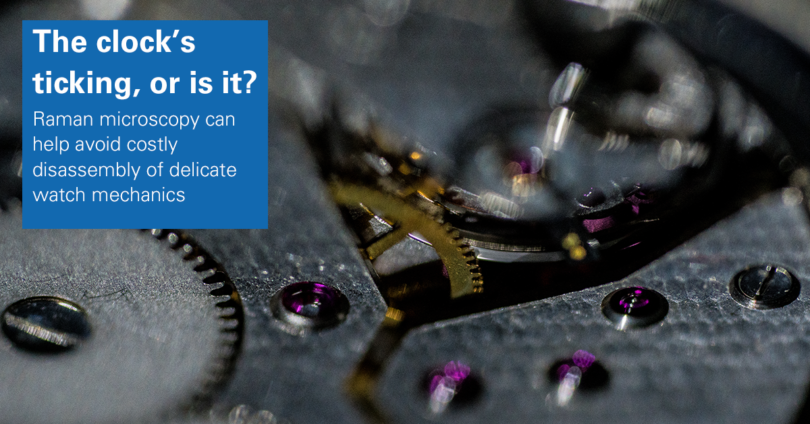There are many examples of small mechanical components in everyday items like electrical motors, cameras, and watches. These parts significantly contribute to the funcionality of the whole device, but are prone to failure due to their delicacy. In those cases, efficient troubleshooting is of highest importance!
In this real-life example, a defective pocket watch was examined to determine the reason of failure. Besides removing the cover glass to improve visual inspection no further parts were disassembled. The faulty cogwheel was quickly identified, since its teeth showed significant signs of unusual wear and tear (Figure 1).

residue (red/blue) was selected and analyzed with Raman microscopy.
Although the visual data gave first hints on the defects nature, yet only a chemical analysis by Raman would yield the whole picture. The dark residue on the cogwheel and teeth edges showed distinct signals of aliphatic hydrocarbons, most likely a lubricant or anti-corrosive sealant.
Finding the root cause
Additionally, the residue‘s Raman spectra also revealed bands typical for inorganic material (below 1200 cm-1). Upon closer inspection and after a successful reference library comparison, the unknown signals were identified as albite (Figure 2). This common silicate can be found around the world and has a Mohs hardness of 6–6.5.

The lubricant apparently contains albite (red), a silicate mineral.
It was suspected that the lubricant used in the production of the pocketwatch was already contaminated with small particles of albite. This caused constant degradation on the delicate watch mechanics, leading to product failure. When the respective lubricant batch was checked, the suspicion was conclusively confirmed and the faulty batched disposed.
Raman spectroscopy is of great use in microanalysis, e.g. microplastics. Check out the full AppNote or take a look at our website to learn more about confocal Raman microscopy.
References
[1] Bruker AppNote R537 Raman-Troubleshooting and Failure Analysis of small mechanical parts.







